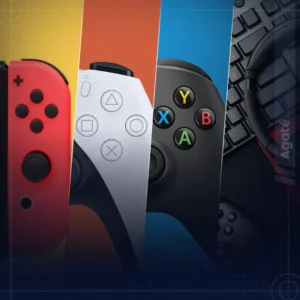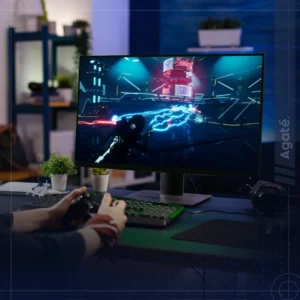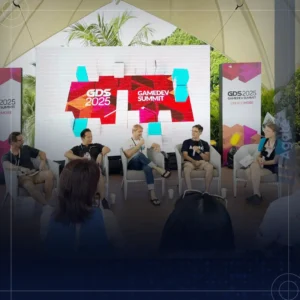3D game development is a challenging and rewarding field that requires a combination of creativity, technical skills, and passion. Whether you are a beginner or a seasoned professional, you need the right tools and resources to create amazing 3D games that can captivate and entertain your audience.
In this article, we’ll introduce you to 10 of the best tools and resources for 3D game development that can help you with various aspects of your game creation process, such as design, programming, art, animation, sound, testing, and publishing. These tools and resources are not ranked in any particular order, but they are all widely used and recommended by many 3D game developers around the world.
Let’s get started!
Unreal Engine
Unreal Engine is one of the most powerful and popular real-time 3D creation platforms in the world. It offers a complete suite of tools and features that enable you to create stunning 3D games across multiple genres and platforms. You can use Unreal Engine’s visual scripting system, Blueprint, to create gameplay logic without coding or use C++ for more advanced programming. You can also access a vast library of assets, templates, tutorials, and documentation on the Unreal Engine Marketplace and Learning Portal. Unreal Engine is free to use for personal and educational purposes, but you must pay a 5% royalty fee on your game’s gross revenue after the first $1 million per product per calendar quarter.
Unity
Unity is another leading real-time 3D development platform that allows you to create immersive 3D games for various platforms, such as PC, console, mobile, web, VR, and AR. Unity has a user-friendly interface and a flexible scripting system that supports C#, JavaScript, and Visual Scripting. You can also use Unity’s built-in tools and assets to design, animate, light, and render your game scenes. Unity has a large and active community of developers who share their knowledge and resources on the Unity Asset Store and Unity Learn. Unity is free to use for individuals and small teams with annual revenue or funding less than $100K.
Blender
Blender is a free and open-source 3D creation software that can be used for modeling, sculpting, texturing, rigging, animating, rendering, compositing, editing, and more. Blender has a comprehensive set of tools and features that can help you create high-quality 3D assets for your games. You can also use Blender’s integrated game engine, UPBGE (Unofficial Blender Game Engine), to create interactive 3D games within Blender. Blender has a supportive community of artists and developers who contribute to its development and provide tutorials, documentation, add-ons, and assets on the Blender Cloud and Blender Market.
Godot
A free and open-source game engine that can be used to create 2D and 3D games for various platforms. Godot has a unique scene-based architecture that allows you to organize your game into reusable components. You can use Godot’s visual scripting system or its own scripting language, GDScript (like Python), to code your game logic. You can also use Godot’s built-in tools for physics, audio, animation, UI (user interface), networking, and more. Godot has a friendly and helpful community of developers who offer support and resources on the Godot website and forums.
CryEngine
A cutting-edge 3D game development platform that is known for its realistic graphics and performance. CryEngine uses a node-based visual scripting system called Schematyc to create gameplay logic without coding, or C++ for more complex programming. You can also use CryEngine’s powerful tools for level design, terrain editing, lighting, shading, audio, animation, and physics. CryEngine has a rich ecosystem of assets, tutorials, and documentation on the CryEngine Marketplace and Learning Hub. CryEngine is free to use for personal and educational purposes, but you must pay a 5% royalty fee on your game’s gross revenue after the first $5K per quarter.
Buildbox
No code is needed for this 3D game development software. Buildbox lets you create games by simply dragging and dropping assets and nodes. Buildbox has a simple and intuitive interface that makes it easy for anyone to create games without any prior experience or skills. You can use Buildbox’s presets, templates, smart assets, and animations to design your game scenes and characters. You can also use Buildbox’s logic nodes to add interactivity and functionality to your game. Buildbox supports various platforms, such as PC, console, mobile, and web. Buildbox has a free plan that allows you to create one game with up to 50 scenes.
Lumberyard
Lumberyard is a freeware game engine developed by Amazon that can be used to create 3D games for PC, console, mobile, and cloud platforms. Lumberyard is based on CryEngine and offers similar features and tools for graphics, audio, animation, physics, and networking. Lumberyard also integrates with Amazon Web Services (AWS) to provide cloud-based services for your game, such as multiplayer, live streaming, analytics, and monetization. Lumberyard has a visual scripting system called Script Canvas that allows you to create gameplay logic without coding. Lumberyard has a comprehensive set of documentation, tutorials, and samples on the Lumberyard website.
GDevelop
Free and open-source game engine that can be used to create 2D and 3D games for various platforms. GDevelop has a user-friendly interface and a visual programming system that lets you create games without coding. You can also use GDevelop’s built-in behaviors to add common functionalities to your game objects, such as movement, physics, platformer, top-down, and more. GDevelop has a large and active community of developers who share their games, tutorials, and assets on the GDevelop website and forum.
GDevelop
Free and open-source game engine that can be used to create 2D and 3D games for various platforms. GDevelop has a user-friendly interface and a visual programming system that lets you create games without coding. You can also use GDevelop’s built-in behaviors to add common functionalities to your game objects, such as movement, physics, platformer, top-down, and more. GDevelop has a large and active community of developers who share their games, tutorials, and assets on the GDevelop website and forum.
GameMaker Studio 2
This 2D and 3D game development software allows you to create games using a drag-and-drop interface or a scripting language called GameMaker Language (GML). GameMaker Studio 2 has a range of tools and features that enable you to create games for various platforms, such as PC, console, mobile, and web. You can use GameMaker Studio 2’s room editor, sprite editor, tile editor, sound editor, and animation editor to design your game assets and scenes. You can also use GameMaker Studio 2’s extensions and marketplace to access additional functionalities and resources for your game.
RPG Maker
You’re probably most familiar with this one, a game development software that specializes in creating role-playing games (RPGs). RPG Maker has a simple and intuitive interface that allows you to create games without coding. You can use RPG Maker’s database, map editor, event system, character generator, and plugin manager to create your own RPG world and characters. You can also use RPG Maker’s resources and assets to customize your game’s graphics, music, sound effects, and more. RPG Maker supports various platforms, such as PC, console, mobile, and web.
Conclusion
These are some of the best tools and resources for 3D game development that can help you get started in 3D game development. 3D game development requires a combination of creativity, technical skills, and passion. The 10 tools and resources listed in this article can help game developers with various aspects of the game creation process, including design, programming, art, animation, sound, testing, and publishing. Of course, there are many other tools and resources that you can explore and use for your game projects. The most important thing is to find the ones that suit your needs, preferences, and goals.







